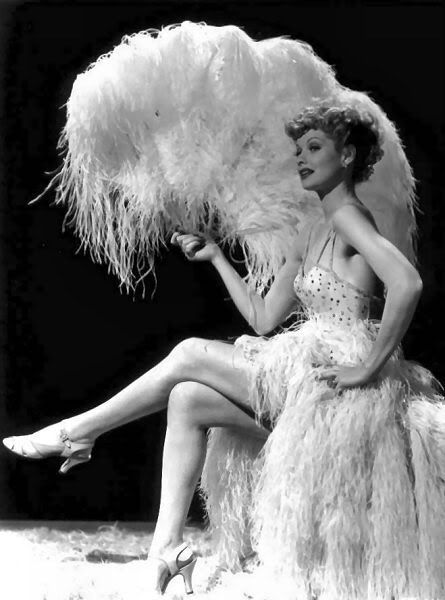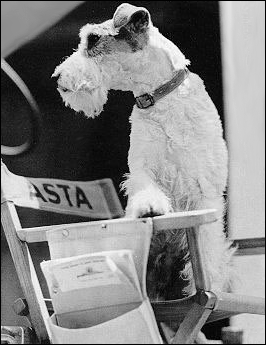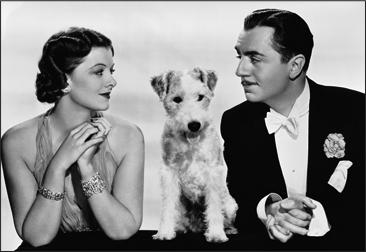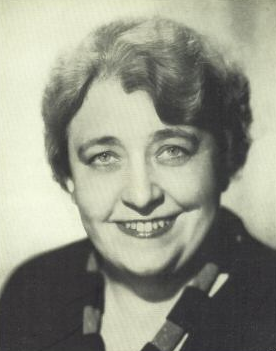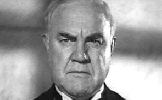
Just look at the picture above - in the 1930s there was no one more stern, stentorian, and judgemental in pictures than Berton Churchill. Yet looks could be deceiving; in reality, Churchill was a founding activist in both Actor's Equity and the Screen Actor's Guild who overcame being blacklisted by Broadway producers to become one of the great fixtures of Hollywood.
Born in Toronto in 1876, Churchill's commanding presence and firm, declamatory voice marked him right away as a candidate for the theater. After tiring of regional acting in Toronto, he made the move the New York sometime after the turn of the century. After toiling for several years in smaller parts and shows, he finally made it in Broadway in 1909 and was soon a fixture on theatrical row, including productions of "Julius Caesar," "The Trail of the Lonesome Pine," and "Adam and Eva." At this point he was often billed as "Burton Chuchill," although whether this was a mistake or a conscious decision is unclear.
Popular with his fellow actors, Churchill became involved with the newly formed Actor's Equity organization in 1913. Emboldened in 1919 by recognition from the AFL-CIO, Equity called the first nationwide strike in the history of American theater, demanding recognition by producers to negotiate better terms for actors. Churchill was at the center of this firestorm from his position in the New York office, and he worked together with actress Marie Dressler (the president of Equity) to organize the strike and hold out for better wages and treatment. A proud moment for Churchill, which would be repaid by his blacklisting by New York theatrical producers for almost three years.
Yet Berton would not be kept down. Already in his mid-forties, he moved on to character roles with great acclaim, soon returning to Broadway and beginning to appear, briefly, in the movies. He made a few brief appearances in silent films, but with a booming voice like his, he was made for the talkies. By the early 1930s his career exploded, moving quickly from shorts to feature films. In 1931 Churchill would say goodbye to Broadway and moved out to Hollywood for good.
With his white hair and voice of authority, Berton would quickly be cast in authority roles; a perusal of his over 100 roles in 10 years turns up plenty of judges, senators, and even a President or two. He scored a coup in the prestigious "I Am A Fugitive From a Chain Gang" (1932) as the judge who wrongfully convicts the innocent Paul Muni. And he had the good fortune in 1933 to hook up with that great lover of characters, John Ford. Ford cast Churchill as the belligerent brother of Will Rogers' lover in "Doctor Bull." Churchill's self-important bluster was the perfect counterpart to Rogers' laidback cpountry charm, and they would duel onscreen in three more films, "Judge Priest," "The County Chairman," and "Steamboat Round the Bend." Below he's in fine form 17 sec in, trying to convict Stepin Fetchit as a chicken thief:
Yet he's even more entertaining as the revival "New Moses" in "Steamboat Round the Bend," a southern fire-and-brimstone preacher whose testimonial alone can save Rogers' nephew from death. Occasionally Churchill would play a likable character, as he did in "Every Day's A Holiday," but it was rare. He was simply too good as a blustery buffoon.

In 1933, the old Union organizer proudly aligned himself with the Screen Actor's Guild; Churchill was one of the original founders and played a big role in the development of the guild, no doubt based on his experiences with Equity in New York. This time, gladly, his career didn't seem to suffer one whit.
In the mid 30s Churchill found himself in the position that many character actors faced: as a well-known figure they weren't quite popular enough to anchor an "A" picture, but might well take the lead in a B pic, such as "The Dark Hour," where Berton plays a retired detective called out to solve a murder mystery. The film is creaky fun, especially with Quickie Queen Hedda Hopper on hand (before she picked up her poison pen and began writing gossip). It's enjoyable to see Churchill as the straight lead as well - the whole film is on youtube, but I enjoyed this excerpt starting at 5:15 when Berton meets Hedda. Also--"The Dark Hour" was produced by Chesterfield Motion Picture Coporation, a division of Chesterfield cigarettes. Truly, a different time.
The Churchill juggernaut rolled on during the 1930s, averaging 9 films for 1936, 1936, and 1938. Then in 1939 came a role that Berton would remain best known for, as banker Henry Gatewood in John Ford's "Stagecoach." Churchill was at his two-faced best, playing a banker who absconds with funds, yet still considers himself the moral superior of everyone on the coach, especially Claire Trevor's prostitute character and the outlaw John Wayne. In the trailer below at 1:28 in, he lashes out at everyone in the coach, oblivious to his own hypocrisy. It's a great performance in a film filled with great performances.
Churchill continued to work in films and at the same time was preparing to return to Broadway at the age of 64, to star in Kaufman & Hart's "George Washington Slept Here." Yet he died during rehearsals, depriving him of the chance to bestride the Great White Way one last time. Still, the legions of actors who hold their Equity and SAG cards owe a little something to Berton Churchill, the man who made being hated a career.
Suggested Viewing:
-I Am A Fugitive From a Chain Gang
-Steamboat Round the Bend
-Kid Millions
-Stagecoach
P.S. Berton Churchill co-starred in 1934's "Kid Millions," as a greedy relative trying to get some of Eddie Cantor's money. While he doesn't appear in the ending to the film, I present it below as a tribute to how insanely crazy Hollywood films can sometimes be. Also, enjoy the 3 strip, mind-blowing Technicolor:

